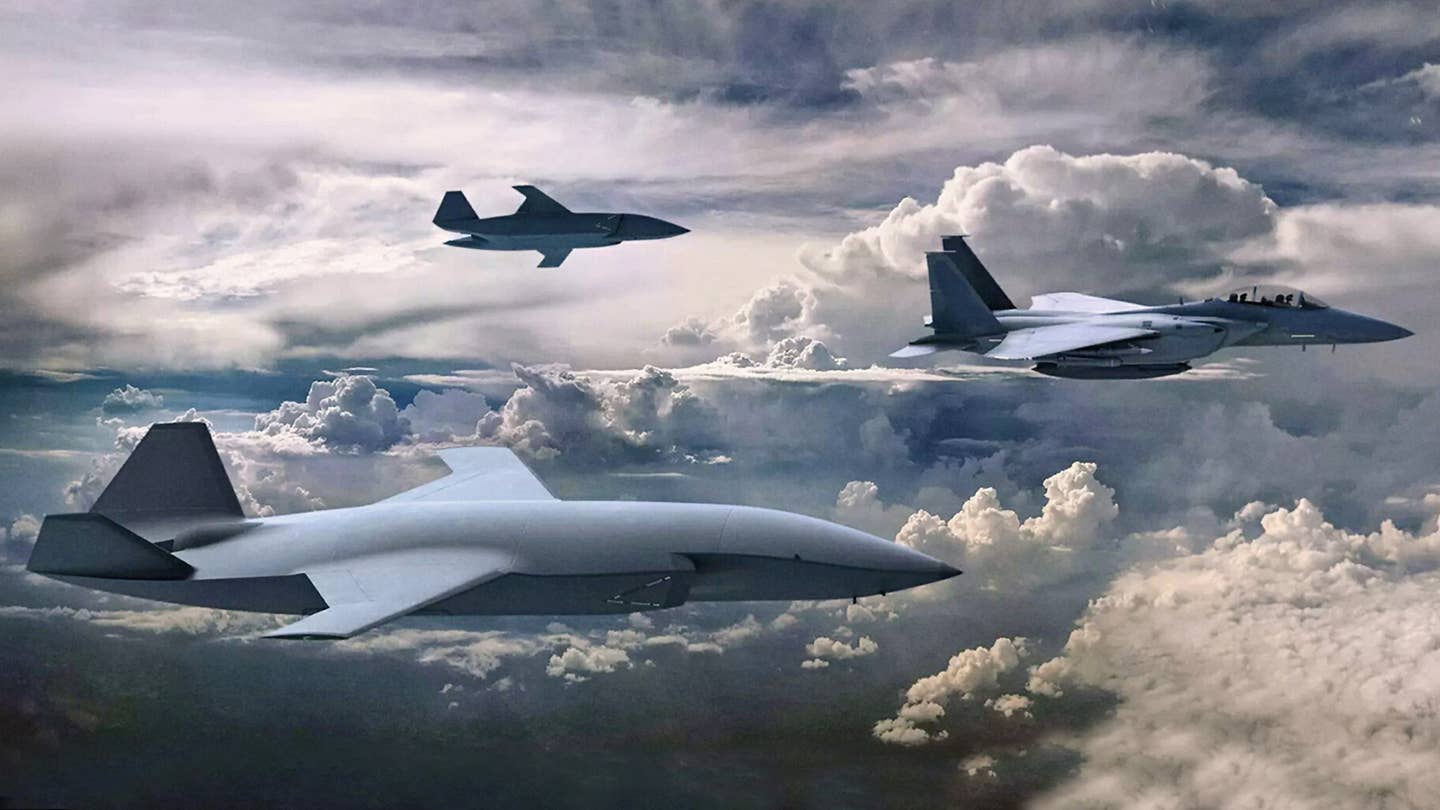A high-ranking US Air Force official has suggested Japan’s potential participation in a collaborative effort with the United States to develop advanced drones known as collaborative combat aircraft (CCA).
China’s JF-17 ‘Wrestles’ India’s LCA Tejas For Nigerian Fighter Deal; Back Channel Diplomacy In Full Swing
As EurAsian Times has extensively reported, the US Air Force is pursuing its Next-General Air Dominance (NGAD) program, and the CCA drone is expected to be its loyal woman.
The CCA program envisions a fleet of drones operating alongside traditional fighter jets, capable of receiving commands from piloted aircraft and executing diverse missions such as strikes, intelligence gathering, jamming, and decoy operations.
In an interview with Asia Nikkei, the US Secretary of the Air Force, Frank Kendall, expressed the readiness of the United States to collaborate with Japan on developing autonomous aircraft driven by artificial intelligence for the Air Force.
The joint pursuit of advanced technology is crucial for the allies’ cooperation. Despite not providing a specific timeline, Kendall confirmed that Tokyo would eventually participate in the American CCA program.
While the initial development of the aircraft is slated to be undertaken by US contractors, Kendall emphasized the potential for future collaboration with Japan, stating that the program aims for incremental performance enhancements over time.
The US Secretary of the Air Force highlighted technology’s ongoing maturation and advancement, expressing optimism about expanding collaborative efforts beyond the current technological initiatives.
The anticipated Japanese participation stems from an agreement on AI and aerial drones forged between the Pentagon and Japan’s Ministry of Defense in December.

This agreement aimed to facilitate a joint study on collaborative combat aircraft for Japan, and Kendall acknowledged the technical capabilities Japan could contribute to the cooperative endeavor.
American authorities consistently underscore the importance of fostering interoperability among allied nations as they work towards advancing future air power capabilities.
This commitment is exemplified by prior collaborative initiatives between the United States and Australia in drone technologies, particularly in developing uncrewed wingman applications.
A notable instance of this cooperation is reflected in Boeing’s MQ-28 Ghost Bat, a “loyal wingman” drone designed for deployment by the Royal Australian Air Force.
This collaborative effort serves as a clear illustration of joint endeavors in enhancing air capabilities.
Demonstrating keen interest, US Air Force officials have expressed a desire to capitalize on this technology, as evidenced by Boeing’s introduction of this uncrewed technology in the United States last year.
Japan’s Involvement In Collaborative Combat Aircraft
Japan has been engaged in discussions regarding Collaborative Combat Aircraft (CCA)-style drones as part of the Global Combat Air Program (GCAP). The GCAP initiative involves a partnership with the UK and Italy to jointly develop the next-generation fighter jet.
On the other hand, the US Air Force is actively pursuing the Next Generation Air Dominance project, and the US Navy is working on the F/A-XX as part of their respective next-generation fighter jet initiatives.
Notably, with these efforts, there is a shared interest in developing drones that can operate with these advanced fighter jets.
Anticipated outcomes from these projects include the operation of these fighters alongside unmanned Collaborative Combat Aircraft, characterized by a high degree of autonomy driven by artificial intelligence.
However, the United States is not involved in the GCAP effort. The potential for Japan’s collaboration with either side and the extent to which this collaboration may intersect remains to be observed.

Yet, the CCA effort has taken center stage in response to the growing threat perceived by the US from China’s pursuit of air dominance in the western Pacific.
The Pentagon’s recent annual report on Chinese military power, issued in October, highlights China’s establishment of a formidable integrated air defense system within a 556-kilometer radius of its coast.
This development poses a significant risk for US-manned aircraft approaching China’s periphery during potential conflicts, prompting the US Air Force to explore integrating emerging autonomous technologies and artificial intelligence (AI) to maintain air superiority.
On the other hand, Japan gains a strategic advantage through its participation in the CCA project, particularly in mitigating the challenges posed by frequent scrambles to intercept foreign aircraft breaching its airspace.
Experts have underscored the toll on the Japan Air Self-Defense Force’s fighter forces due to the demanding pace of day-to-day operations, particularly alert scrambles.
The envisioned role of Collaborative Combat Aircraft accompanying manned fighters on scrambles holds the potential to extend sensor range and, consequently, reduce the number of fighters needed to support air sovereignty missions over time.
This collaborative approach aligns with the broader goal of enhancing efficiency and effectiveness in countering Chinese military threats in the region.
- Contact the author at ashishmichel(at)gmail.com
- Follow EurAsian Times on Google News




